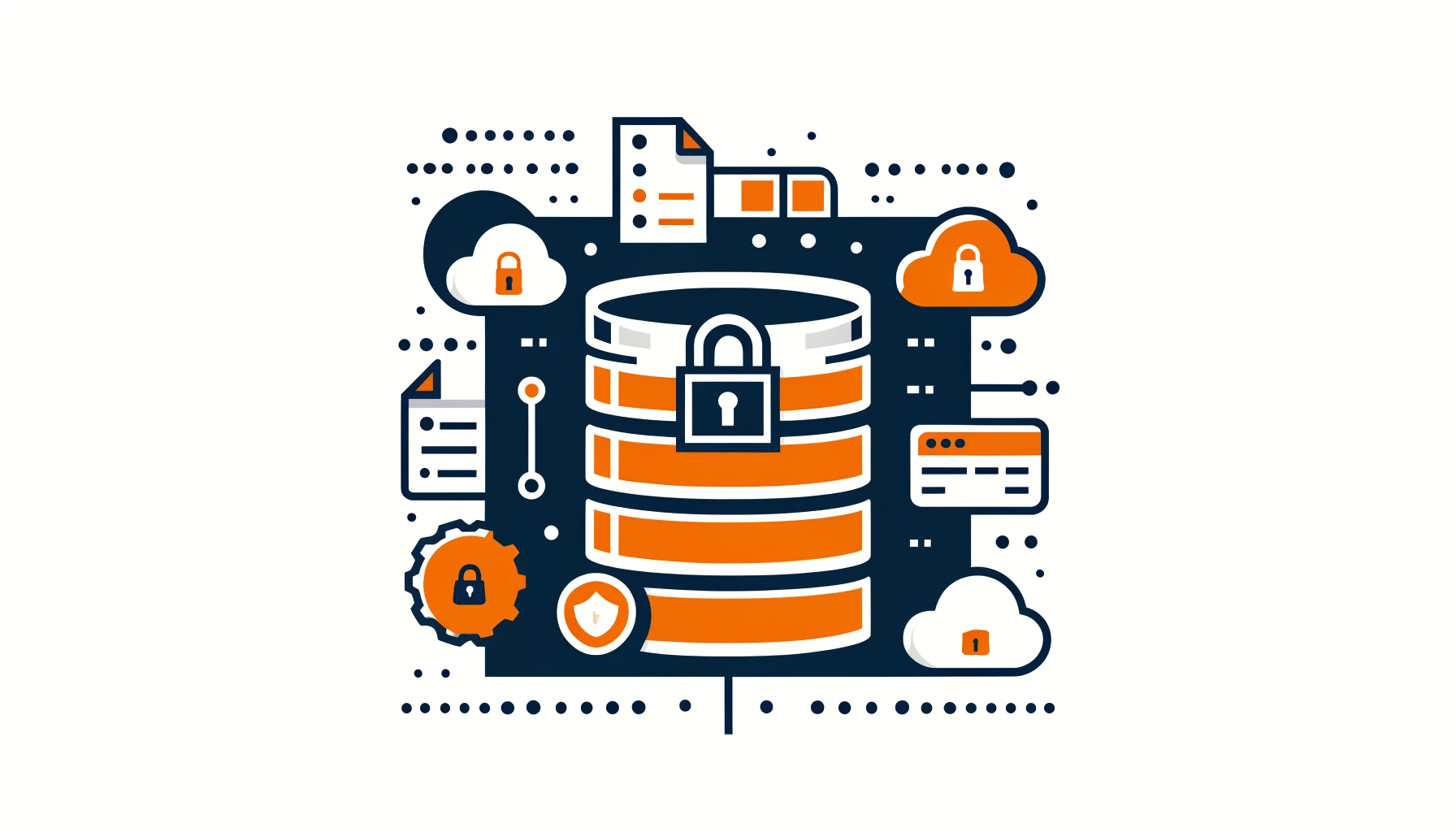
Database Encryption

In today’s digital age, data is one of the most valuable assets for businesses and organizations. However, with the increasing number of data breaches and cyber-attacks, it has become crucial to ensure the security of sensitive information stored in databases. This is where database encryption comes into play. In this article, we will explore the basics of database encryption and how it can help protect your data.
What is Database Encryption?
Database encryption is like a strong shield that turns data into a secret code using encryption and a hidden key. By strategically encrypting the database, we can prevent unauthorized access. Encrypting the database strategically can stop unauthorized access. If someone tries to access the data without permission, they won’t be able to read it without the decryption key.
Database encryption protects sensitive information like personal details, financial data, and confidential business dealings from unauthorized access.
Encrypting data at rest significantly reduces the risk of data breaches and helps ensure compliance with strict security regulations.
Various strong cryptographic algorithms explore the details of encryption algorithms used in this process. These algorithms, like AES and RSA, are the foundation of database encryption methods. They provide different levels of security and efficiency. The algorithm chosen depends on the security needs and performance limits of the database system.
Database encryption is a strong protection that safeguards important data from unauthorized access. Organizations can keep their data secure by using encryption algorithms and safeguarding decryption keys.
This helps build trust and integrity in an increasingly digital world. Maintaining the security of data assets is crucial for organizations. Encryption algorithms and protected decryption keys play a key role in achieving this. Trust and integrity are important factors in today’s digital landscape.
Encryption Workflow
The typical workflow of database encryption involves the following steps:
1.Encryption
The system encrypts sensitive data with an encryption algorithm and secret key before storing it in the database.
2.Storage
The database stores the encrypted data, while securely managing and storing the encryption keys separately.
3.Decryption
Authorized users or applications can request to view encrypted data. The database system retrieves the data and unlocks it using the correct key.
4.Access
The system provides the decrypted data to authorized users or applications for processing or analysis.
They keep the encryption and decryption processes secret. Users and applications do not have access to them. This makes it easy to access data while also keeping it private.
Database Encryption in Popular Databases
Many popular database management systems offer built-in encryption features to secure sensitive data. Let’s examine how some widely used databases implement database encryption.
MS SQL Server
Microsoft SQL Server provides several encryption options, including Transparent Data Encryption (TDE), Column-Level Encryption (CLE), and Always Encrypted. TDE protects the entire database by encrypting it at the file level. CLE, on the other hand, allows you to encrypt specific columns within a table. Always Encrypted ensures that the database engine processes the data while it remains encrypted.
Example of enabling TDE in MS SQL Server: USE master; GO CREATE MASTER KEY ENCRYPTION BY PASSWORD = 'YourStrongPassword'; GO CREATE CERTIFICATE MyDatabaseCertificate WITH SUBJECT = 'MyDatabase TDE Certificate'; GO USE MyDatabase; GO CREATE DATABASE ENCRYPTION KEY WITH ALGORITHM = AES_256 ENCRYPTION BY SERVER CERTIFICATE MyDatabaseCertificate; GO ALTER DATABASE MyDatabase SET ENCRYPTION ON; GO
Oracle
Oracle Database provides Transparent Data Encryption (TDE) to encrypt data at the column level or tablespace level. It also offers the Oracle Advanced Security option, which includes features like network encryption and data redaction.
Example of enabling TDE in Oracle:
-- Create a wallet to store the master encryption key ALTER SYSTEM SET ENCRYPTION KEY IDENTIFIED BY "YourStrongPassword"; -- Encrypt a tablespace ALTER TABLESPACE users ENCRYPTION ONLINE USING 'AES256' ENCRYPT;
PostgreSQL
PostgreSQL supports column-level encryption through the pgcrypto extension. It provides various encryption functions and allows you to encrypt specific columns in a table.
Example of encrypting a column in PostgreSQL:
-- Enable the pgcrypto extension
CREATE EXTENSION pgcrypto;
-- Create a table with an encrypted column
CREATE TABLE sensitive_data (
id SERIAL PRIMARY KEY,
name TEXT,
encrypted_ssn TEXT
);
-- Insert encrypted data
INSERT INTO sensitive_data (name, encrypted_ssn)
VALUES ('John Doe', pgp_sym_encrypt('123-45-6789', 'YourSecretKey'));MongoDB
MongoDB offers client-side field-level encryption, which allows you to encrypt specific fields in a document before sending it to the database. It uses the MongoDB driver to perform the encryption and decryption operations.
Example of encrypting a field in MongoDB using the Python driver:
from pymongo import MongoClient
from pymongo.encryption import ClientEncryption
# Set up the key vault and data key
key_vault_namespace = "encryption.__keyVault"
kms_providers = {
"local": {
"key": b"YourLocalMasterKey"
}
}
data_key_id = "YourDataKeyId"
# Create a ClientEncryption instance
client_encryption = ClientEncryption(
kms_providers,
key_vault_namespace,
MongoClient()
)
# Encrypt the sensitive field
encrypted_ssn = client_encryption.encrypt(
"123-45-6789",
"AEAD_AES_256_CBC_HMAC_SHA_512-Deterministic",
key_id=data_key_id
)
# Insert the document with the encrypted field
db.sensitive_data.insert_one({
"name": "John Doe",
"encrypted_ssn": encrypted_ssn
})Snowflake
Snowflake, a cloud-based data warehousing platform, provides automatic encryption of data at rest and in transit. It uses strong encryption algorithms and manages the encryption keys securely. Snowflake also offers column-level encryption for sensitive data.
Example of encrypting a column in Snowflake:
-- Create a table with an encrypted column
CREATE TABLE sensitive_data (
id NUMBER,
name STRING,
encrypted_ssn STRING ENCRYPT
);
-- Insert encrypted data
INSERT INTO sensitive_data (id, name, encrypted_ssn)
VALUES (1, 'John Doe', ENCRYPT('123-45-6789', 'YourSecretKey'));Summary and Conclusion
Database encryption is a vital component of data security, protecting sensitive information from unauthorized access and data breaches. By encrypting data at rest, you can ensure the confidentiality of your valuable data assets.
In this article, we covered the basics, including its main ideas and workflow. We examined how database encryption is used in popular databases like MS SQL Server, Oracle, PostgreSQL, MongoDB, and Snowflake.
Encryption in each of these databases was enabled using SQL statements or Python. We gave examples of how to enable encryption in each of these databases.
It’s important to remember that database encryption is just one aspect of a comprehensive data security strategy. Regular monitoring, access controls, and proper key management are equally crucial to maintain the security of your encrypted data.
DataSunrise: Exceptional and Flexible Security Tools
For organizations looking for robust and flexible security solutions, DataSunrise offers a range of exceptional tools, including security, audit rules, masking, and compliance features. Our solutions seamlessly integrate with various databases and provide comprehensive data protection.
Come see the DataSunrise team for a demo to learn how our advanced security tools can protect your data.
